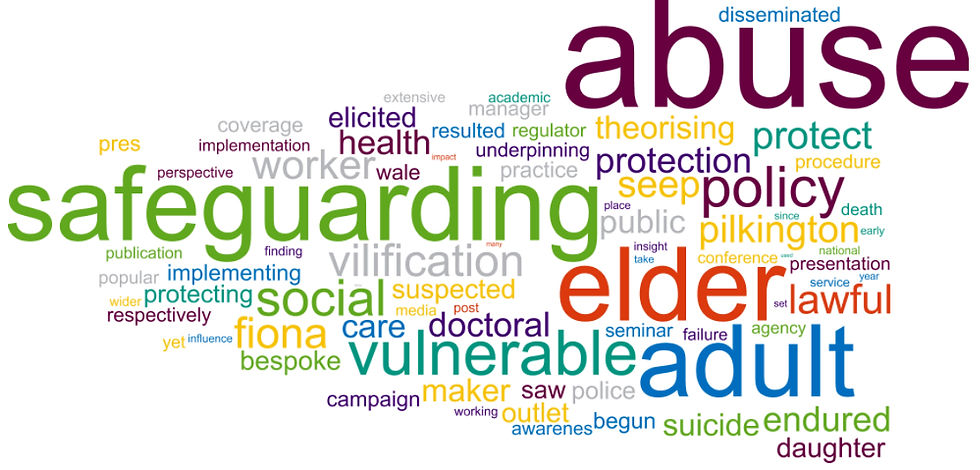AI and Young People
- Alan Day

- Jul 15
- 4 min read

AI and Young People
In the age of artificial intelligence, young people are growing up in a world shaped not just by family, education, and peers—but by algorithms, chatbots, and machine learning systems.
While AI offers immense promise in education, healthcare, creativity, and productivity, it also presents a minefield of potential dangers—especially for young people, who are particularly vulnerable to manipulation, misinformation, exploitation, and psychological harm.
1. Algorithmic Manipulation and Mental Health
AI algorithms on social media platforms are designed to keep users engaged. For young people, this means their feeds are continuously shaped to show content that reinforces existing interests or insecurities—sometimes dangerously so.
Echo chambers can promote harmful ideologies, such as body dysmorphia, eating disorders, or extremist political views.
Addiction to engagement can harm sleep, concentration, and emotional wellbeing. Young minds are still developing self-regulation, and AI-driven platforms exploit this by encouraging constant scrolling and "likes" as validation.
AI-generated content, such as deepfake videos or chatbot conversations, can blur reality, making it harder for youth to distinguish fact from fiction—especially during critical developmental years.
According to studies, excessive social media use is correlated with rising levels of anxiety, depression, and loneliness among teens. With AI making these platforms smarter and more persuasive, the issue is only intensifying.
2. Misinformation and Deepfakes
AI is increasingly being used to generate synthetic content—photos, videos, voices, and articles that appear real but are entirely fabricated. For digital-native youth, this creates a dangerous environment:
Deepfake pornography has already been weaponised against young people, especially girls, with AI-generated nude images going viral on platforms like Telegram and Discord.
Fake news and AI-generated conspiracy theories can shape young people's worldviews before they’ve developed critical thinking skills.
Voice cloning scams can impersonate family members or authority figures, tricking teenagers into sharing sensitive data or taking harmful actions.
Without robust digital literacy education, young people are particularly susceptible to these deceptions.
3. Data Exploitation and Surveillance
Children and teenagers are producing massive amounts of data online. AI systems analyse and monetise this information in ways that are often invisible to them—and to their parents or teachers.
Behavioural profiling can lead to children being targeted with specific ads, offers, or even political propaganda based on their data.
Privacy breaches are common, with AI-powered facial recognition or tracking tools potentially used in schools, on social media, or in public spaces.
Biometric data, such as fingerprints or facial images used in school attendance systems or smart devices, can be harvested and stored without informed consent.
Young people don’t always understand the long-term implications of data sharing, making them prime targets for AI-driven data mining.
4. AI Companions and Social Isolation
AI chatbots and "virtual friends" are becoming popular among adolescents who feel lonely or misunderstood. While these tools can offer temporary comfort, they carry significant risks:
Emotional dependency on AI companions may lead to reduced human social interaction, impacting social development.
Manipulative conversations—particularly if the chatbot isn’t ethically designed—can reinforce negative self-talk, unhealthy attachments, or misinformation.
Sexual grooming by AI tools, either through poor safeguards or malicious training, has been a growing concern, especially when children explore romantic or sexual topics.
The line between human interaction and synthetic simulation is blurring, and young people may be the first generation to feel the psychological fallout.
5. Educational Inequality and Algorithmic Bias
AI tools are reshaping education—adaptive learning platforms, automated grading, and virtual tutors are becoming widespread. But this digital revolution isn’t without problems:
Bias in algorithms can disadvantage students from minority or low-income backgrounds, reinforcing existing inequalities.
Overreliance on AI tutors may hinder critical thinking or creativity, as students start trusting machine-generated answers over thoughtful inquiry.
Inequitable access to high-quality AI tools can widen the achievement gap between well-resourced and under-resourced schools or communities.
If education becomes increasingly AI-driven, the systems need to be transparent, fair, and accessible to all—not just the privileged few.
6. Job Anxiety and Future Pressures
Young people are also aware that AI is reshaping the job market, sometimes with terrifying implications:
Automation anxiety is real: youth are growing up hearing that "robots will take your job" and that only those who learn coding, data science, or engineering will survive.
Pressure to adapt to an AI-dominated economy may lead to increased stress, anxiety, or a sense of inadequacy—particularly for those less inclined toward STEM fields.
Loss of human value in favour of efficiency metrics may shift societal focus away from empathy, ethics, and creativity.
Rather than inspiring innovation, the AI narrative is increasingly fuelling fear among the next generation.
What Can We Do About It?
Addressing the dangers of AI to young people requires a multi-pronged approach:
Digital Literacy Education: Teach children and teens to critically assess digital content, recognise manipulation, and protect their privacy.
Stronger Regulations: Enforce laws that limit data collection, require transparency in AI systems, and hold companies accountable for harm caused by their technologies.
Parental and Educator Involvement: Adults need to stay informed and actively engage with the AI tools and platforms their children are using.
Ethical AI Development: Tech companies must prioritise youth safety in AI design, including age-appropriate content filters, bias auditing, and clear consent mechanisms.
Mental Health Support: Invest in accessible, youth-friendly mental health services that can help mitigate AI-related anxieties and pressures.
Conclusion
AI is not inherently evil—it is a tool, one that reflects the priorities and values of its creators and users. But when left unchecked, it can and will exploit the most vulnerable—especially children and teenagers. As society races ahead with AI innovation, we must pause to ask: are we protecting those who cannot yet protect themselves?
If we fail to address these dangers now, we may be raising a generation that feels more isolated, manipulated, and disoriented than ever before—despite being more connected than any in history.



Comments